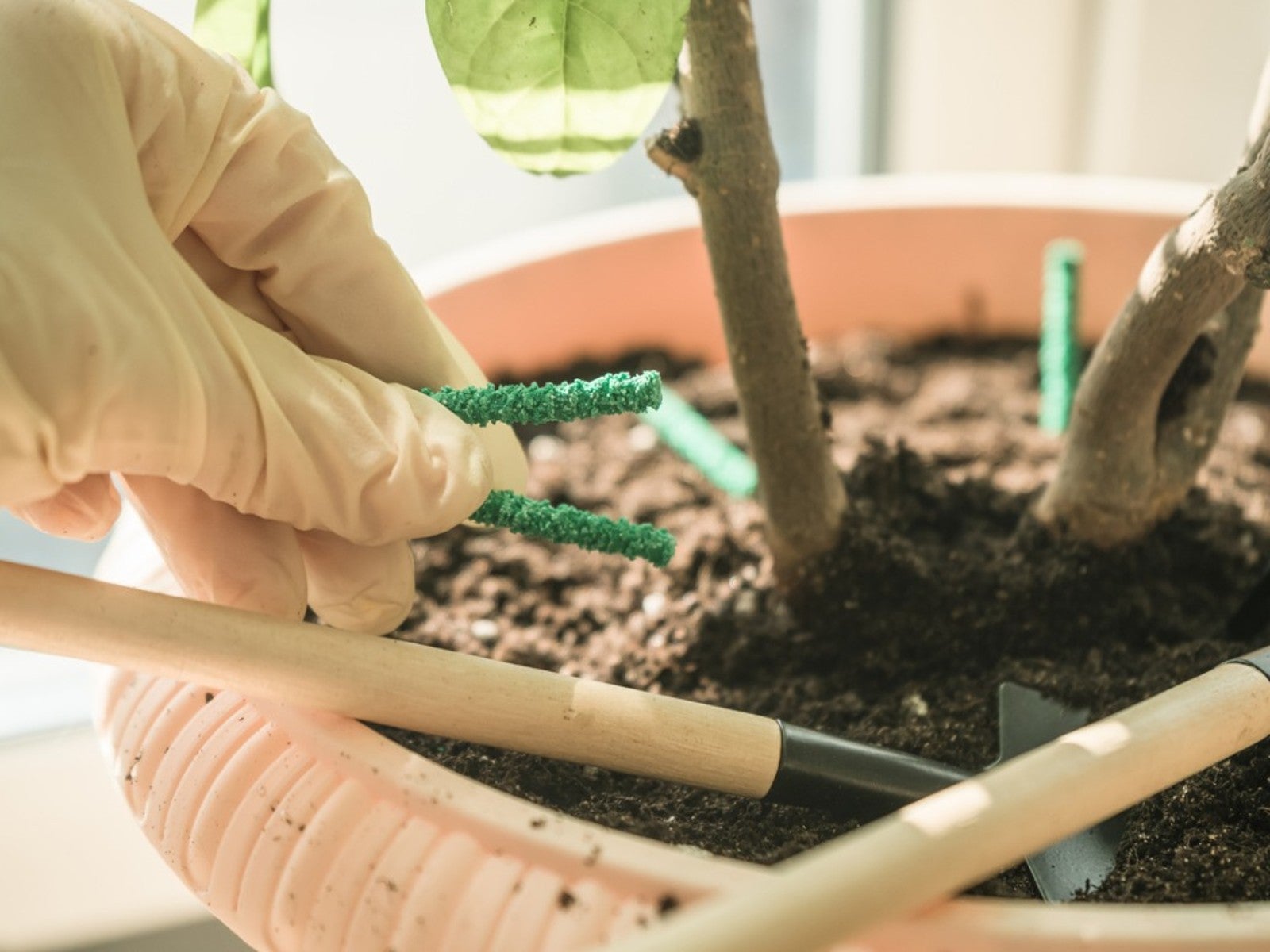How To Use Fertilizer Spikes On Potted Plants Outdoors


Plant spikes are an easy way to give indoor or outdoor plants a boost. They provide a slow release of nutrients for container or in-ground plants. While they sometimes cost more than granular or foliar feeds, they are simple to use and almost fool proof. They are available in many ratios that can be fine tuned to meet the needs of specific plants. Do fertilizer spikes work? That depends on the plant, the time of introduction, and the ratio of macro-nutrients.
What could be simpler to use than a plant spike that you just inter in the soil? Fertilizer spikes for potted plants or even in-ground plants come in a range of formulas. There are spikes specific for fruit trees, all purpose spikes, and a range of other varieties. Outdoor fertilizer spikes are fairly large but act in the same way that the little houseplant types deliver nutrients. Want to know how to use fertilizer spikes for indoor plants or even your outdoor plants? It couldn't be more straightforward, but the products don't work in every case. Plant type, housing, watering needs, and other factors will all affect the effectiveness of plant spikes.
Are Fertilizer Spikes Good for Houseplants?
Plants need micro and macro-nutrients, along with the proper soil, light, and moisture. Plant spikes, such as Jobe's spikes are common. You can even find them at the Dollar Store. They are inexpensive ways to deliver some food to plants in containers. Container bound plants are suspended in soil that gets no more nutrients unless it is delivered purposefully. They also leach out nutrients during watering. Over time, potted soil will be depleted of the nutrients that were introduced to the mixture when purchased. It is possible to re-pot the plant every once in a while with a mixture that will carry required nutrients, but not all plants like to be disturbed. A far easier way is to push in a plant spike. The nutrient content of the average spike is a 6-12-6 ratio of nitrogen, phosphate and potash. This is a reasonable amount of nutrient for the average houseplant, but for certain plants such as succulents, a formula of 1-1-1 might be best.
Plant Spikes for Outdoor Plants
Fruit trees and other outdoor plants also require added nutrients, depending upon the soil and other considerations. There are easy to use plant spikes to hammer into the ground near the root zone. These will break down gradually, delivering nutrients to the roots. Nitrogen is a particularly necessary macro-nutrient, but it tends to leach off during irrigation. Using a plant spike, the slow-release action will provide a gentle introduction of nitrogen that will not burn plant roots. Not every outdoor plant will need such fertilization, but citrus and other fruit trees will certainly benefit. Palms also require some extra nutrition to enhance health. Plants provide their own food from photosynthesis, but they cannot harvest nutrients that are not present in soil. Plant spikes can provide those necessary nutrients for better plant health.
How Plant Spikes Work
Spikes provide several months worth of nutrients. Some spikes contain formaldehyde, a compound that is not desired in food plants, so look at the product label carefully. There are many natural or organic spikes from which to choose, that will not carry this chemical.
In spikes, the release of nutrients is fueled by bacterial and fungal activity that is activated when moisture touches the spike. The slow release of nutrients is an excellent way to deliver those needs to a plant. It is important to put plant spikes a bit away from the root zone, because even though the release is slow and gentle, any excess has the potential to burn roots. As with any chemical formulation, read the manufacturer's directions carefully and follow instructions to the letter.
Sign up for the Gardening Know How newsletter today and receive a free copy of our e-book "How to Grow Delicious Tomatoes".

Bonnie Grant is a professional landscaper with a Certification in Urban Gardening. She has been gardening and writing for 15 years. A former professional chef, she has a passion for edible landscaping.